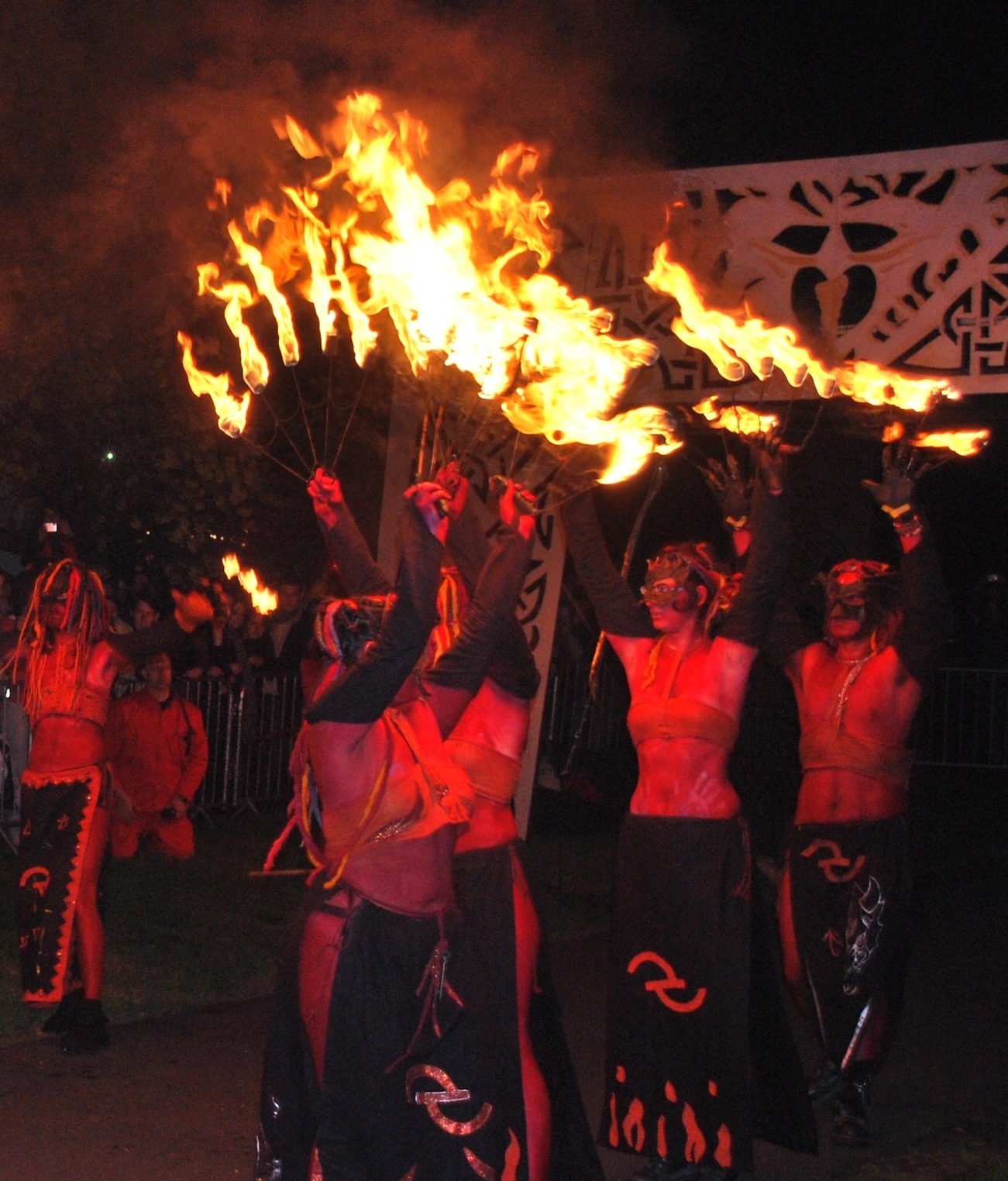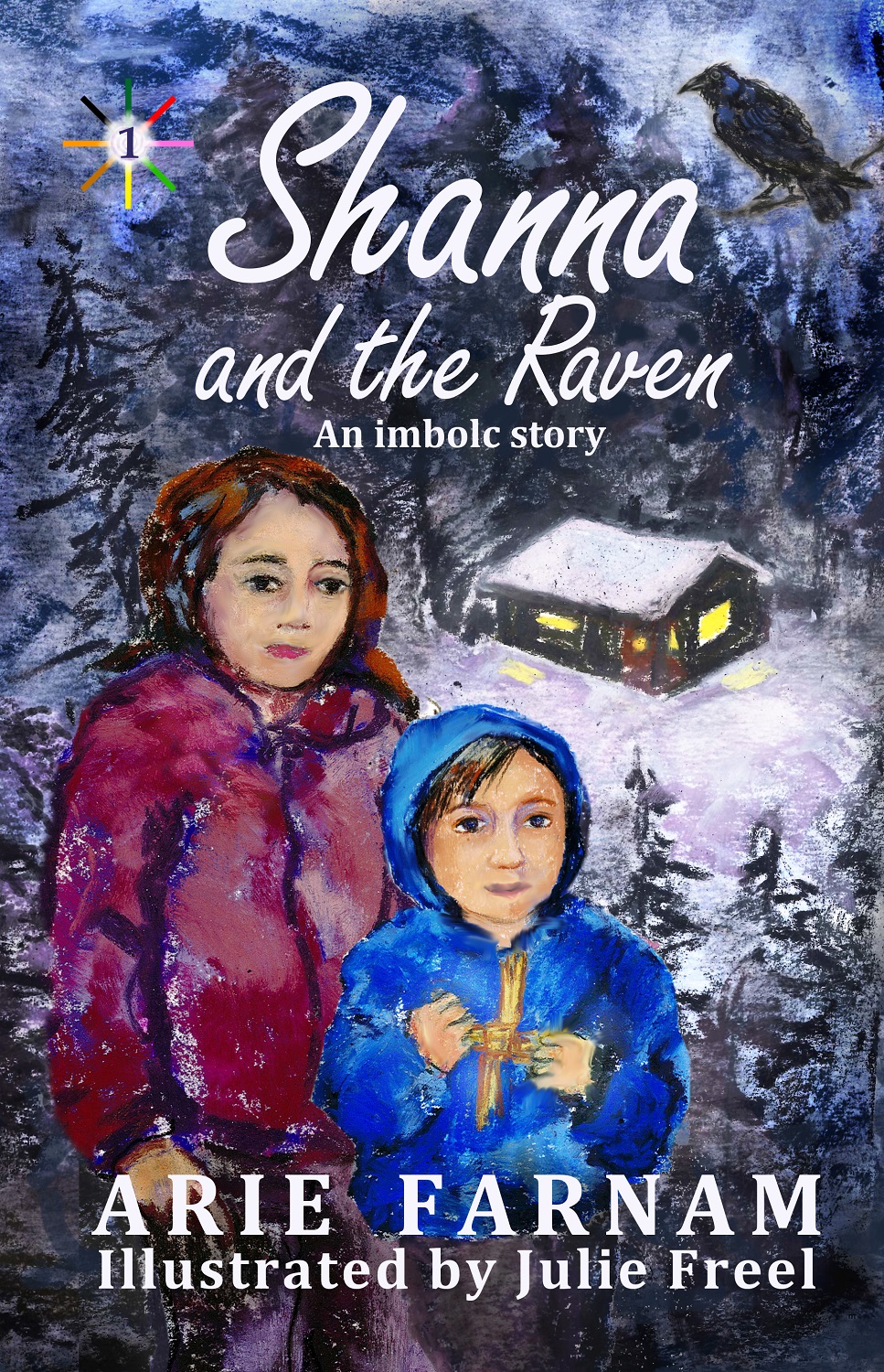Identity for children in Pagan and mixed households
/When I was a child, it bugged me every time someone asked me, "What are you?" meaning "What religion do you follow?" That wasn't because I didn't want to be asked. It bugged me even more, when they just assumed I was Christian like 95 percent of everyone in the community around us.
It bugged be because I had no words for it.
I grew up in a time and place where earth-centered spirituality was kept under wraps and publicly admitting it could very well lead to employment problems and/or an investigation by Child Protective Services. It was probably a good thing that I had no words for the little rituals, rune drawing, Tarot cards and quarter calling that I participated in with my mother's circle. And I survived the quiet longing for something more openly stated pretty well.
Image by Arie Farnam
But today most Neopagans have no such external restraints on giving our children a spiritual identity. Instead we are caught in the dilemma of whether and how much to hand our kids the ready-made Pagan identity.
This goes beyond the concern that some adult Pagan events don't or can't reasonably include children. There are plenty of ways a child can be involved in earth-centered or even specific Neopagan practice. The feasts of the Wheel of the Year provide plenty of kid-friendly fun, inspiration and tradition, even if that is all a child is exposed to.
But many earth-centered parents have either seen friends undergo or undergone themselves the forcing of a religious identity in childhood. The major religions today, other than Paganism, insist that children born within them should be held to them. Many Pagans who weren't born into an earth-centered path are Pagans specifically because they fled the oppressive atmosphere of religions that force an identity and practice on children.
So naturally we don't want to become just as bad as what so many of us struggled to free ourselves from. And the issue of how much to develop family-centered traditions permeates Pagan parenting discussions.
In my family, that dilemma intersects with another long-standing controversy in Neopaganism--the issue of ethnic identity. There are many mixed-race families in Paganism today. I've run into Norse-tradition Heathens who are half-Scandinavian and half-African but naturally to Europeans look more African than Scandinavian. There are Irish-East Indians. a great many people with mixed European and Native American background and many Pagans whose ancestry is all over the map.
And in my family and several others, there is the issue of inter-ethnic adoption. Life takes us down unexpected paths and ours led my husband and I to adopt two children who happen to be of a different ethnicity. They are Romani (ethnic Gypsies) and as such there is some debate over whether or not they qualify as ethnic Europeans, since their ancestors came to Europe from India somewhat more recently than most Europeans.
This type of thing isn't a controversy because we believe that one must follow the Pagan tradition of one's genetic ancestors. There have certainly been plenty of non-Celtic Wiccans while other Wiccans claimed some connection between Wicca and ancient Celtic traditions. But it is uncommon to find a Slavic reconstructionist Pagan who doesn't have at least some Slavic genetic background. And when it comes to children, it is particularly important to honor their own unique genetic heritage.
It's an unarguable fact that most earth-centered traditions share a deep connection with ancestors and the land on which ancestors lived. Certainly we can and do honor ancestors connected to us by our tradition, craft or beliefs as well as those of blood and nation. But it is hard to entirely ignore the issue without some doubts of authenticity creeping in.
There is very little scholarly work to be found documenting original Romani spirituality. There are always rumors and plenty of people who will claim their Romani grandmother passed great Pagan spiritual traditions down to them. But Romani people still living in the Romani communities today usually vehemently deny much of what these revelations claim. While the Roma as a people have held on to their language and culture far more fiercely than most other small, landless ethnic groups, they are chameleons when it comes to religion.
Wherever Romani communities are found today, they match the religion of the majority society. In Muslim areas, they are Muslim. in Catholic areas they are Catholic and in Orthodox areas they are Orthodox. Whatever is left of their original spiritual traditions is well buried.
And so I not only stand in the usual dilemma of most Pagan parents today, but also on an ethnic divide, where one side is almost entirely unavailable. I feel a strong connection to the ancestors and spirit of the Central European landscape where I now live and to Celtic traditions. But neither of those seems to have much to do with my children. My altar carries ancestral symbols for everyone in our household--Celtic, Norse, Romani and Slavic. And when I honor ancestors of blood, I honor them all.
But I am hesitant to tell my children what they should be.
I tell them they are Romani and teach them to be proud and not to hide it. I tell them their citizenship in two countries. I tell them about Romani ancestry and about mine and that of my husband. I tell them that the spiritual traditions we practice are sometimes called Pagan.
But there is a line where I stop. I don't tell my children they should call themselves Pagan.
I have pointed out when someone identifies as Christian or Pagan or Muslim, explaining what it means to identify yourself that way. But I leave their own identity open to them with enough words and experience imparted that when they do want to choose i hope they will know something about what they are choosing.
So far, my nine-year-old daughter wants nothing to do with spirituality. She refuses to enter churches and avoids my altars and Tarot cards, and she always has. My seven-year-old son, on the other hand, often asks to light a candle on the altar, colors pictures from Pooka Pages, asks to draw a Tarot card, spontaneously says a Pagan morning prayer sometimes and requests Pagan songs for his piano lessons. These are all things he is exposed to because of adults around him.
This is the wavering line I've decided to walk in parenting between too mysterious an identity and forced identity.
We read myths and other stories from a Pagan worldview. I have even authored several Pagan children's books, illustrated by the children's grandmother. I don't hide my rituals or altars and I sing a short blessing song before important meals (though not before all meals). We occasionally meet up with another Pagan family with young children for holidays.
We celebrate the eight holidays of the Wheel of the Year as a family with specific earth-centered traditions. My husband enjoys the traditions and the focus on nature but isn't particularly spiritually inclined. So some of the holidays aren't overtly spiritual. It's just what we do and it adds a pleasant, natural rhythm to the year.
There are many different paths to walk in Pagan parenting and it is beyond my station to say what is right or wrong in it. The Shanna books (Shanna and the Raven, Shanna and the Pentacle and Shanna and the Water Fairy) portray a single-parent household that is somewhat more overtly Pagan than mine. The children in the story are older than my kids and have a more developed sense of their identity.
But much of the conversation and holiday traditions practiced by the fictional family of the story is similar to what our family and many others do. The second book, Shanna and the Pentacle, weaves a story around the issues of identity that kids in middle childhood often face.
In this spring-equinox themed story, eleven-year-old Shanna has to consciously acknowledge what her pentacle necklace means, though she previously thought of it mainly as a gift from a friend. And she has to learn to stand up for herself in the face of pressure in a society where Pagans aren't the majority. The story is one that is close to home for most kids in Pagan families and Shanna's adventures along the way prepare her to make her own decisions about identity.
I wrote that story and the others as part of my quest to find the right balance of information, experience and freedom of choice for my kids. My parenting is a work in progress and I love to hear from other parents dealing with related issues. Please leave comments below if you are inspired.
How do you approach passing on your values and beliefs to your children? Is your family mixed? How do you approach holidays with extended family that may have different traditions? What is the hardest part of parenting children in an earth-centered spiritual tradition? What's the easiest or most fun part? I look forward to reading your experiences.







































































